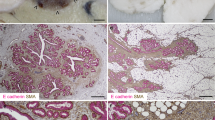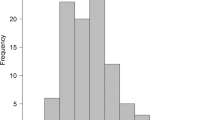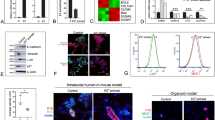Abstract
Morphological identification of cell multiplication (mitosis) and cell deletion (apoptosis) within the lobules of the "resting" human breast is used to assess the response of the breast parenchyma to the menstrual cycle. The responses are shown to have a biorhythm in phase with the menstrual cycle, with a 3-day separation of the mitotic and apoptotic peaks. The study fails to demonstrate significant differences in the responses between groups defined according to parity, contraceptive-pill use or presence of fibroadenoma. However, significant differences are found in the apoptotic response according to age and laterality. The results highlight the complexity of modulating influences on breast parenchymal turnover in the "resting" state, and prompt the investigation of other factors as well as steroid hormones and prolactin in the promotion of mitosis. The factors promoting apoptosis in the breast are still not clear.
This is a preview of subscription content, access via your institution
Access options
Subscribe to this journal
Receive 24 print issues and online access
$259.00 per year
only $10.79 per issue
Buy this article
- Purchase on Springer Link
- Instant access to full article PDF
Prices may be subject to local taxes which are calculated during checkout
Similar content being viewed by others
Rights and permissions
About this article
Cite this article
Anderson, T., Ferguson, D. & Raab, G. Cell turnover in the “resting” human breast: influence of parity, contraceptive pill, age and laterality. Br J Cancer 46, 376–382 (1982). https://doi.org/10.1038/bjc.1982.213
Issue Date:
DOI: https://doi.org/10.1038/bjc.1982.213
This article is cited by
-
DNA methylation age is elevated in breast tissue of healthy women
Breast Cancer Research and Treatment (2017)
-
In-silico insights on the prognostic potential of immune cell infiltration patterns in the breast lobular epithelium
Scientific Reports (2016)
-
Form and Function: how Estrogen and Progesterone Regulate the Mammary Epithelial Hierarchy
Journal of Mammary Gland Biology and Neoplasia (2015)
-
Next-generation transcriptome sequencing of the premenopausal breast epithelium using specimens from a normal human breast tissue bank
Breast Cancer Research (2014)
-
RANKL expression in normal and malignant breast tissue responds to progesterone and is up-regulated during the luteal phase
Breast Cancer Research and Treatment (2014)



